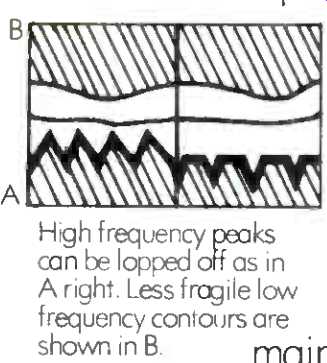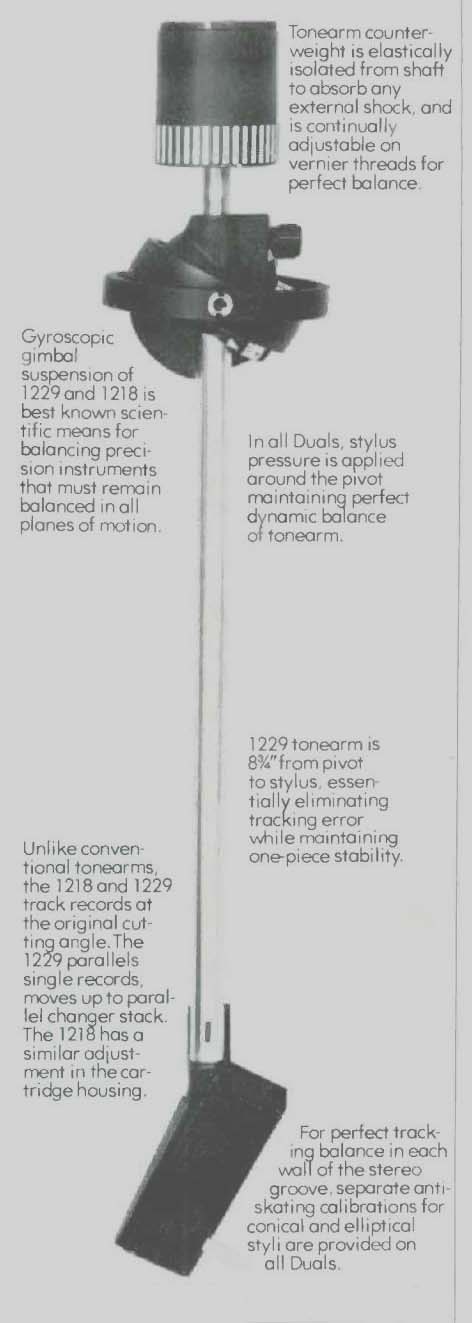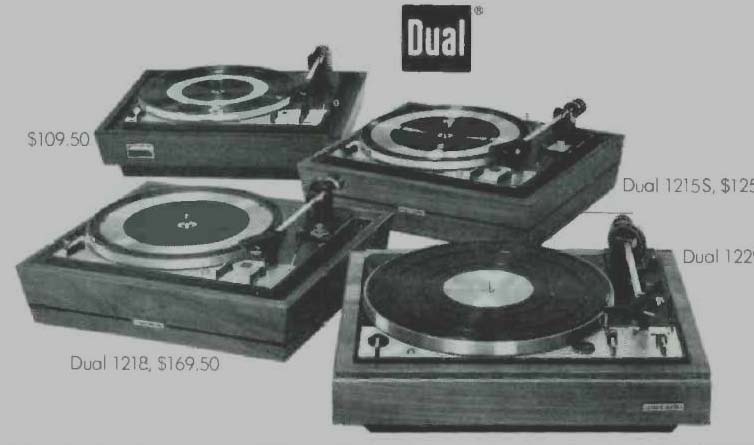Are you playing your records or ruining them?
If you're like most music listeners, you never think about your records after putting them on your record player.
You just sit back and enjoy the music.
Chances are you'd be less relaxed, if you knew that your records might be losing something with every-play.
Like the high notes.
It's something to think about. Especially when you consider how many hundreds or even thousands of dollars you have invested in your record collection.
And will be invested in the future.

--------
What happens during play.
Even the cheapest record changer can bring its tonearm to the record and lift it off again. But what happens during the twenty minutes or so of playing time is something else.
The stylus is responding with incredible speed to the roller-coaster contours of the stereo grooves. This action recreates all the music you hear, whether it's the wall-shaking cacophony of a rock band or the richness of a symphony orchestra.
The higher the frequency of the music, the more rapidly the contours change, and the sharper the peaks the stylus has to trace. If the tonearm bears down too heavily, the diamond-tipped stylus won't go around those soft-vinyl peaks. Instead, it will lop them off.
The record will look unchanged, but your piccolos will never sound quite the same again.
Nor will Jascha Heifetz.
It's all up to the tonearm.
What does it take for the stylus to travel the obstacle course of the stereo groove without a trace that it's been there?
It takes a precision tonearm. One that can allow today's finest cartridges to track optimally at low pressures of one gram or less. For flawless tracking, the tonearm should be perfectly balanced with the weight of the cartridge, and must maintain each stylus pressure equally on each side of the stereo groove. And n order to maintain this equal pressure during play, the tonearm must not introduce any drag. This requires extremely low friction pivot bearings.
There is much more to the design and engineering of tonearms and turntables. But this should be sufficient to give you the idea.
Dual: the music lovers' preference.
By now you probably understand why serious music lovers won't play their precious records on anything but a precision turntable. And the most serious of these people, the readers of the leading music magazines, buy more Dual’s than any other make of quality turntable.
If you would like to know more about Dual turntables, we'll send you lots of interesting literature, including an article on how to buy a turntable, and reports by independent test labs. Or better yet, just visit your franchised United Audio dealer and ask for a Dual demonstration. You will never have to worry about your records again. Dual
How Dual protects your records.

---Tonearm counterweight is elastically isolated from shaft to absorb any external shock, and is continually adjustable on vernier threads for perfect balance.
---Gyroscopic gimbal suspension of 1229 and 1218 is best known scientific means for balancing precision instruments that must remain balanced in all planes of motion.
---Unlike conventional tonearms, the 1218 and 1229 track records at the original cutting angle. The 1229 parallels single records, moves e to parallel changer stack.
The 1218 has a similar adjustment in the cartridge housing.
---In all Duals, stylus pressure is applied around the pivot maintaining perfect dynamic balance of tonearm.
---1229 tonearm is 8%"from pivot to stylus, essentially eliminating tracking error while maintaining one-piece stability.
---For perfect tracking balance in each wall of the stereo groove, separate anti-skating calibrations for conical and elliptical styli are provided on all Dual’s.

Also see:
Dual 1229 turntable (ad, Dec. 1972)
Dual 12xx turntables (ad, May 1973)
Dual 1218 and 1229 turntables (ad, Apr. 1973)
Dual 1249 turntable (Jan. 1976)
Dual Model 1249 Automatic Turntable (Equipment Profile, Feb. 1977)
Dual 1249 turntable (ad, Sept. 1975)
Dual CS 5000 Turntable and Ortofon X3-MC Cartridge (Nov. 1988)
= = = =